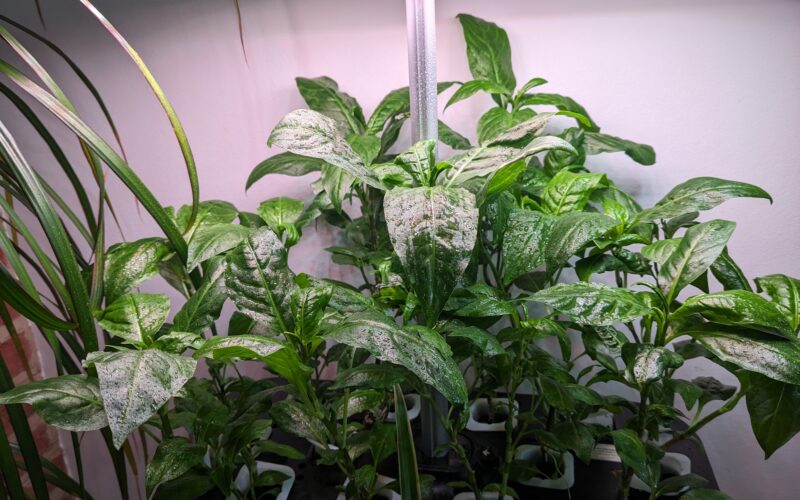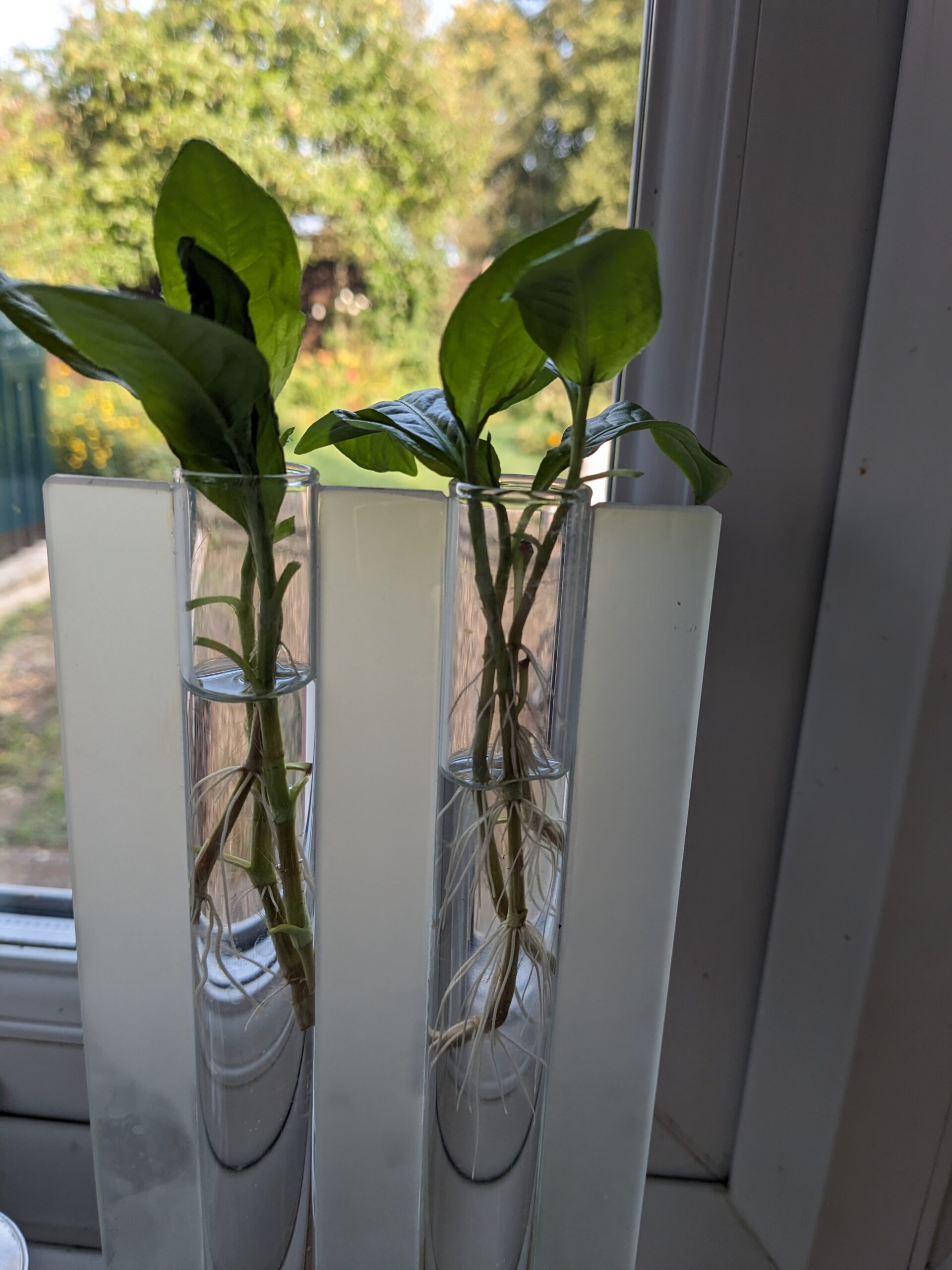 First growth after about two weeks. | Back in September 2023 I took delivery of 6 bare stalks of Japanese Indigo Persicaria tinctoria. I popped them into some water and very shortly after they started to root and grow leaves. I had read about various methods of propagation, including from seed and this seemed to be the easiest option. However, it was very late in the season for growing in the UK so I hoped that I could coax these plants through the winter ready for planting outside the following year. |
After such brilliant progress I was disappointed when, after transferring the cuttings into pots, they failed to thrive and growth almost came to a stop. They were also attacked by what I now know were spider mites but at the time it was a mystery why the leaves suddenly started to curl and dry and eventually die. Time for a rethink and more research. The slowed growth could have been due to many things. I knew the soil was good, they were warm, they were in good light. Maybe they were in shock from transferring directly into the soil? Possibly. I parked that idea for a while and continued to look for options. |  Very poor growth and curling leaves |
| I decided to try a test to see if I had any colour within. So, gathering a few of the leaves I popped them in a jar and waited for them to start fermenting and produce the ‘mermaid water‘. Nothing……. I tried warming the water. Again, nothing. While looking for a cure I happened to read about leaf printing and that indigo leaves were great for this. Always up for something new and not wanting to waste the very few leaves I had left, out came the hammer, some cotton muslin and some silk. This should prove whether there was pigment in there or not! It was just a matter of covering the leaves with the cloth and hammering away. I was so pleased with the results that I tried some fresh Woad leaves to compare. Not quite so much definition but still a plus. The results on the silk however, were brilliant and this is something I will definitely try again in the future. |  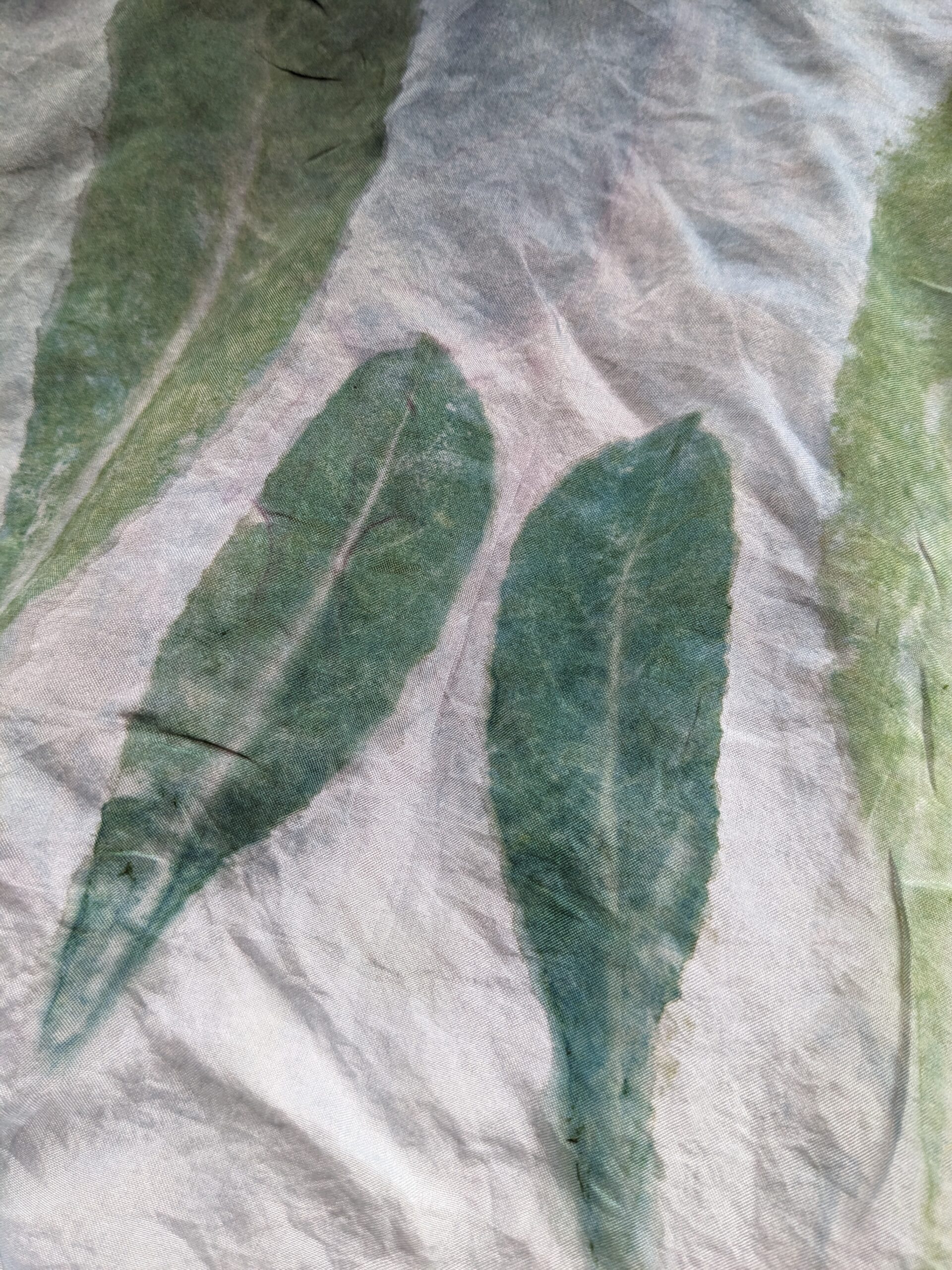 First attempt on cotton and Woad leaves for comparison 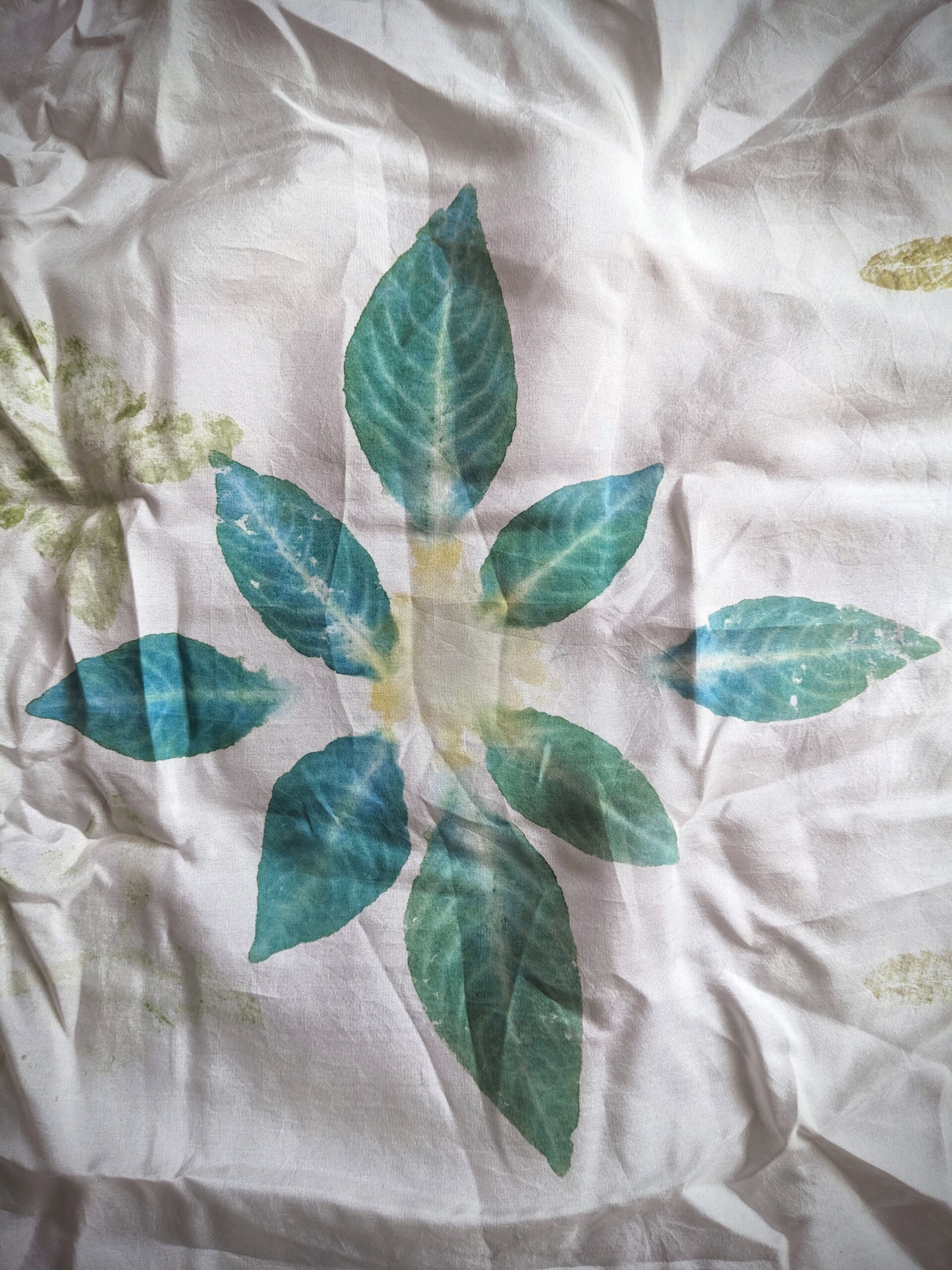 Indigo on silk |
| So, back to the problem of keeping my plants alive through the winter! I happened across a posting in one of the many Facebook Indigo groups that it was possible to grow the plants hydroponically. That is, entirely in water with no soil. This made sense as, in its natural habitat, it is a waterside plant. I could have just put the plants in a bucket or container of water with a liquid feed but my thinking was that if I wanted to over winter them I would need a good light source and winter months in the UK are not known for their abundant sunshine! Online it was then and a search for a hydroponic system with lights was underway. There are many systems out there of various sizes and prices. A veritable minefield of choices. I didn’t want something too big as space is an issue but it needed to be large enough to accommodate the growing plants. A mid to fairly cheap range one was chosen as I really had no idea if this would work. I decided to start over with the Indigo plants and harvested the healthiest stalks, removed the leaves, which I dried for later vating, and put the ‘new’ stalks in the hydroponic garden. The results were absolutely amazing but I couldn’t stop them from flowering and setting seed. I saved what seed I could for propagating in the Spring and then……… the dreaded spider mite hit once more. I tried treating with a spray of neem oil but it really wasn’t successful. I harvested what leaves I could for drying and took the whole system apart and sterilised it with isopropol. I took the strongest stalks and started again. This time they took off wildly and soon became a forest of beautiful promising pigment. In fact they grew so big I thought I might try to extract pigment again only this time with more leaves. I cut the tallest stems and stripped their leaves; the stalks I placed back into the hydroponics as they will produce more plants. I suppose I had a good couple of handfuls of leaves. I’m afraid I didn’t weigh them. I will next time. I placed them in a container and poured hand hot tap water onto them and let them sit. I checked on them regularly to look once more for the magic moment of the mermaid blue water. Success this time; happy face. I aerated with an electric hand whisk for about 6 minutes or so. In theory there should have been lots of blue bubbles and the liquid should have turned blue. It didn’t. It did start to foam eventually and there was a slight blue tinge but nothing major. I continued the process and added some calcium hydroxide as a flocculent ( I had dissolved it in in warm water first). Immediately I could see pigment settling out which was a huge relief. I left it over night and was pleased the following morning to see a fairly clear liquid on top of some nice blue pigment. Success! |  The hydroponic system 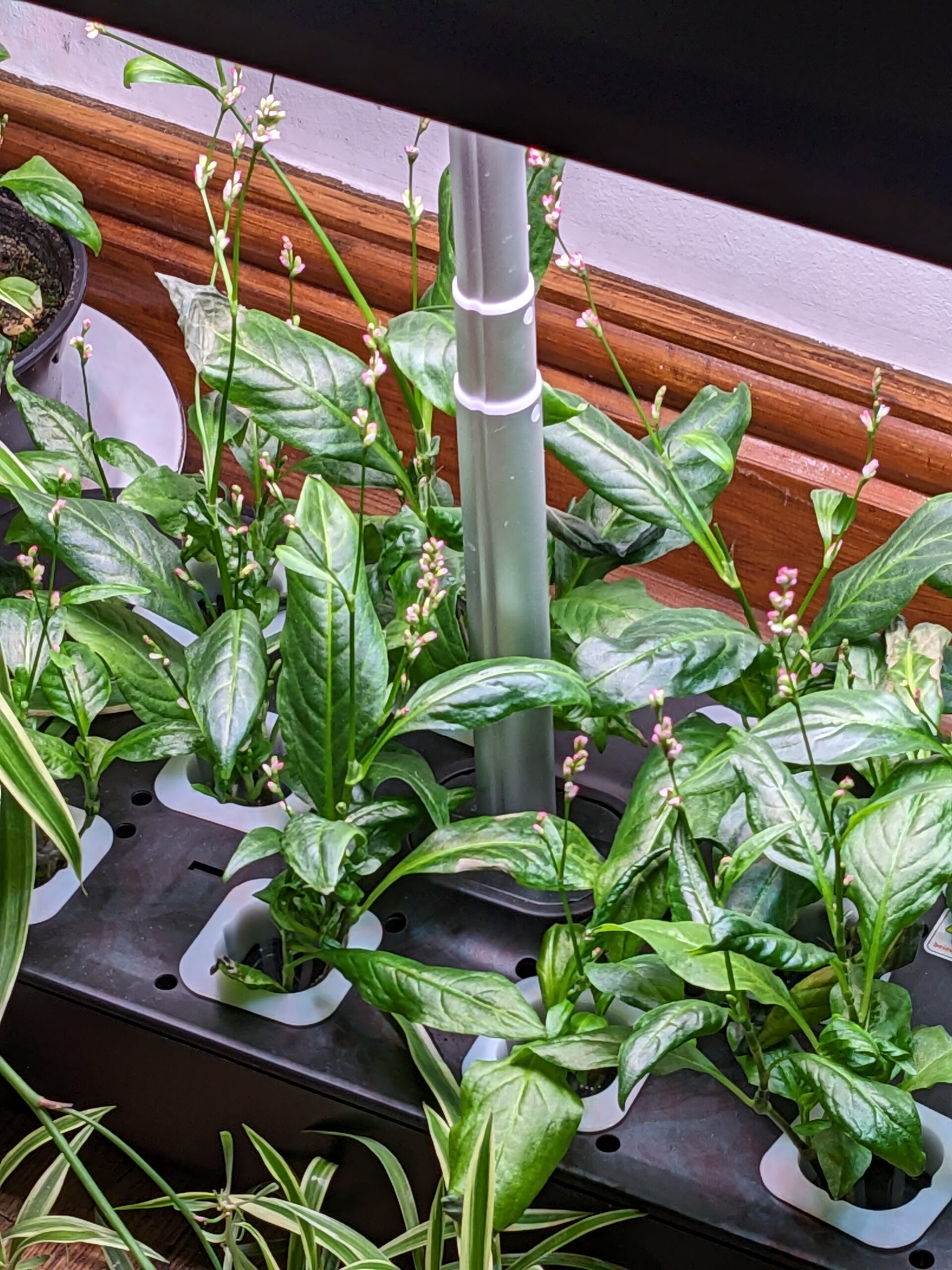 In seed mode 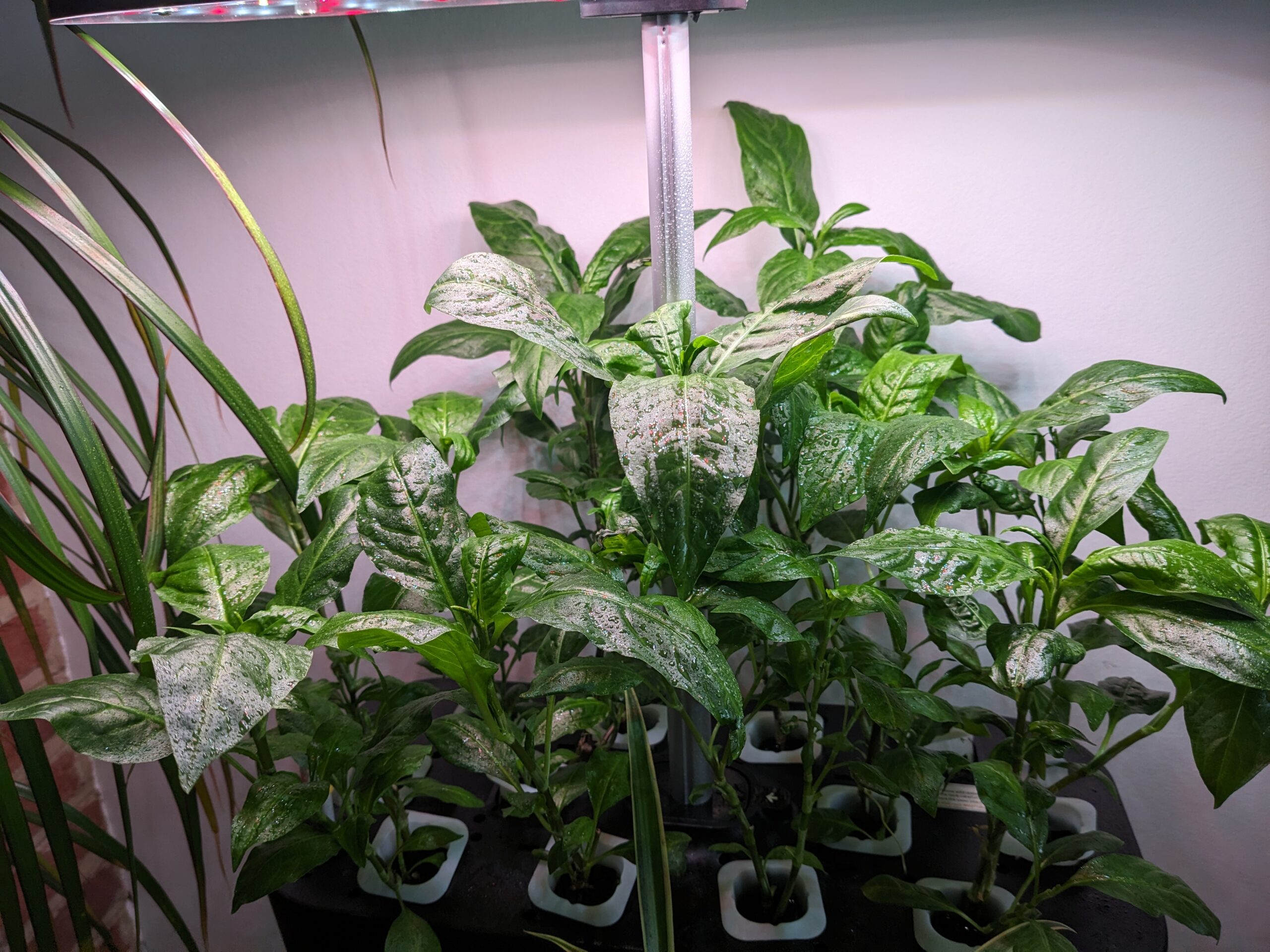 Healthy plants at last |
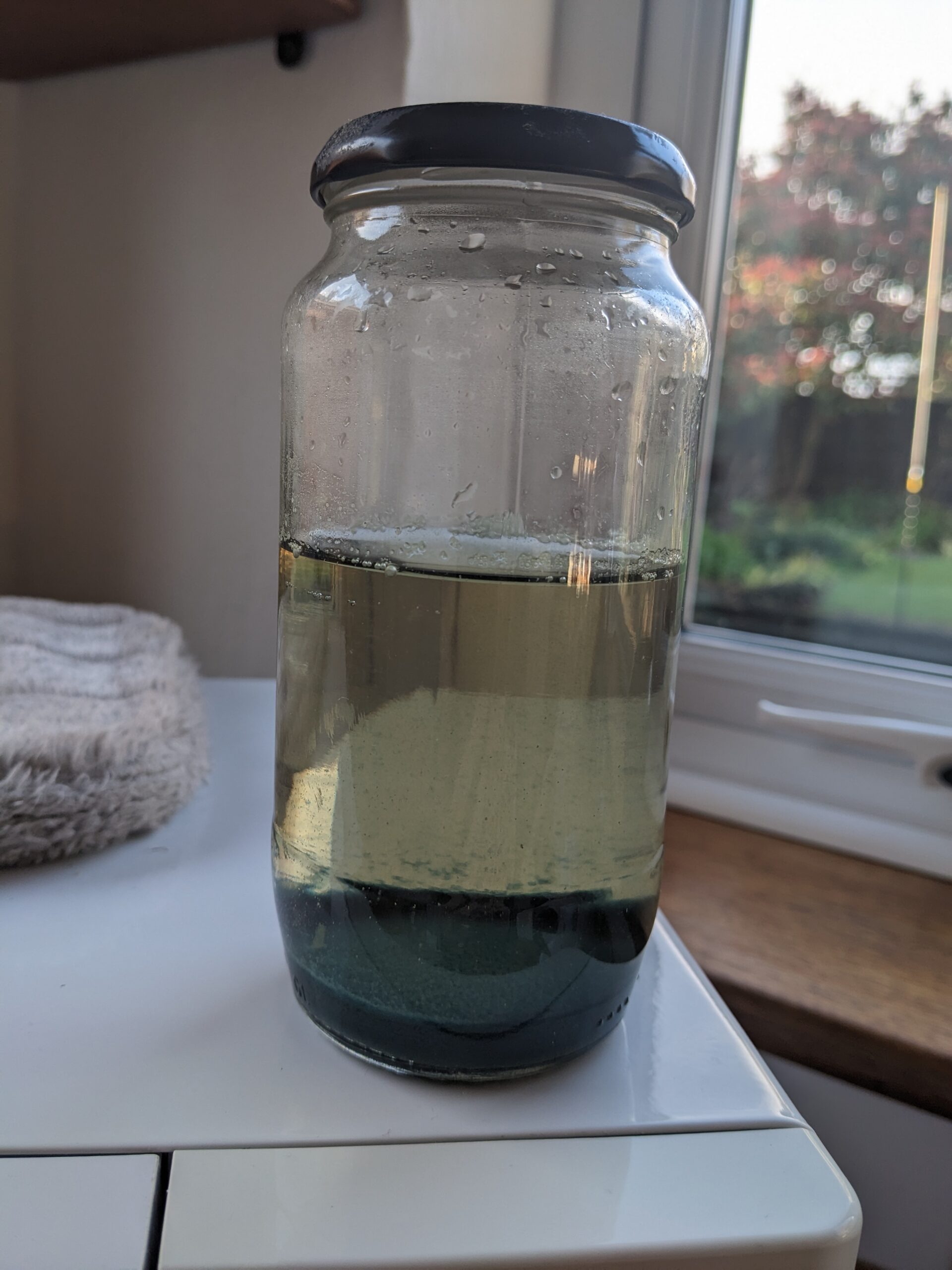 Indigo blue pigment |  After drying |
| After drying I weighed the pigment which amounted to just 2 grams. When you average 4 grams from a Kilo of woad leaves I thought this was pretty good going for a first try and a handful of leaves. |
